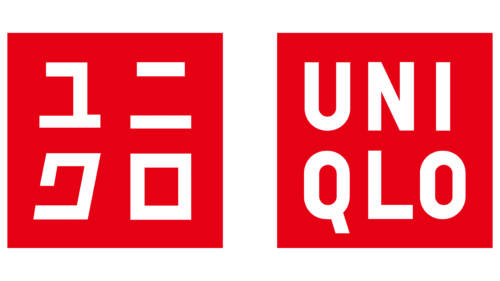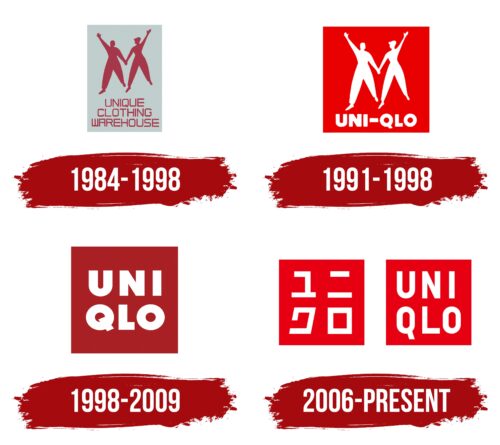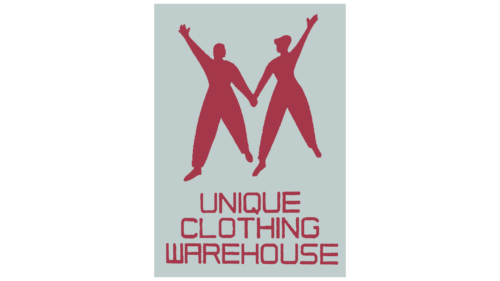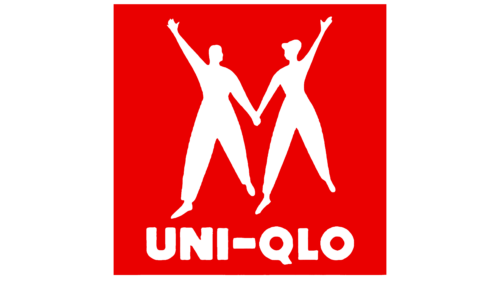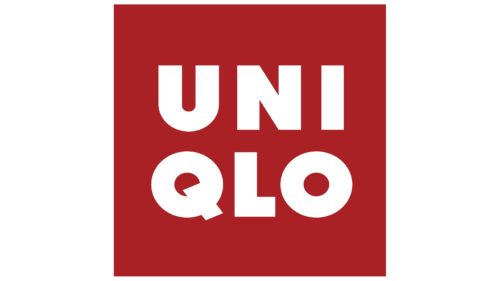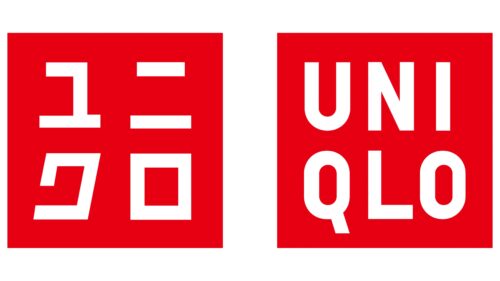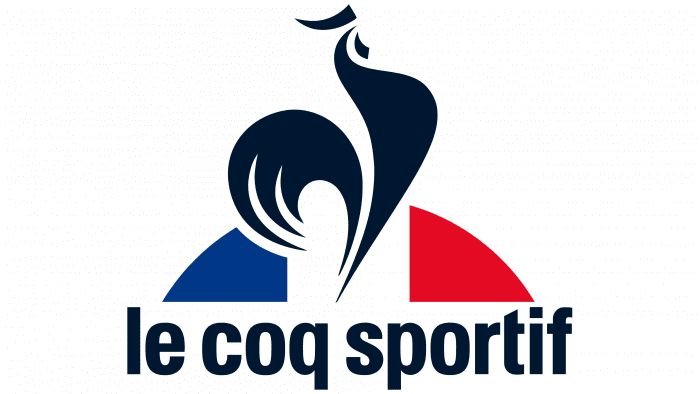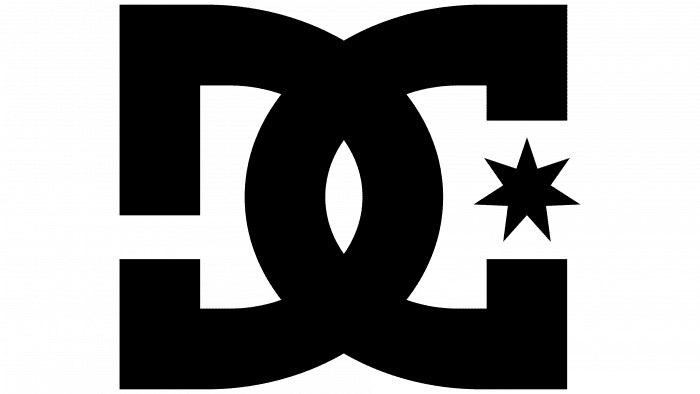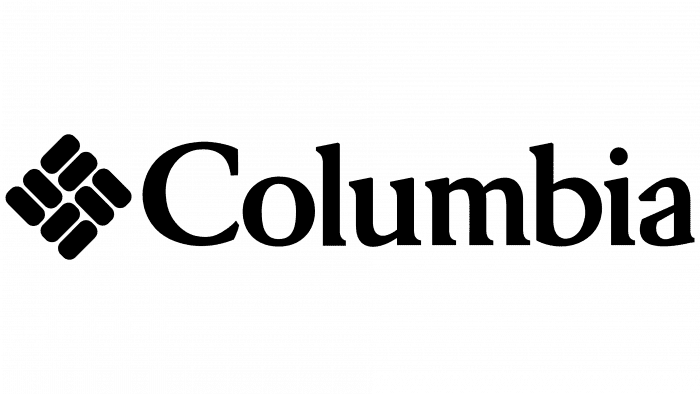The Uniqlo logo symbolizes multiculturalism and tolerance, reflecting the company’s respect for its roots and foreign cultures. The emblem harmoniously blends elements of both Eastern and Western traditions, highlighting the brand’s global reach. By using minimalist shapes and clear lines, the logo appeals to a broad audience, creating a sense of accessibility and modernity. This approach allows the brand to remain relatable to every customer, regardless of cultural background.
Uniqlo: Brand overview
The origins of the Uniqlo brand may be traced back to 1949, when Ogori Shoji, a men’s clothing manufacturing company, was established in Ube, Yamaguchi Prefecture, Japan. At first, the business focused on producing premium men’s apparel for the regional market.
A significant milestone in the business’s history was reached in 1984 when the first “Unique Clothing Warehouse” store opened its doors in Hiroshima. This moniker quickly became “Uni-Clo,” which was simplified to the more well-known “Uniqlo.” The core of the company’s business strategy was this store, which provided high-quality casual clothing at reasonable costs.
The 1990s saw tremendous expansion for the brand. The business started opening shops all over Japan, concentrating on large city suburbs. In 1991, the company formally changed its name to Fast Retailing to better represent the owners’ goals of growing the company quickly.
1998 was a sea change for the company. The business introduced a range of fleece jackets, which shot to fame in Japan. Sales of more than two million units greatly improved financial performance and brand reputation.
When the brand opened its first international location in London in 2000, it significantly increased its growth. This was the start of the company’s international growth. In the ensuing years, the brand aggressively entered foreign markets by setting up shop in France, China, the US, and other nations.
The Heattech range of thermal apparel, created in association with Toray Industries of Japan, debuted in 2002. This ground-breaking item became one of the company’s best-selling products, enhancing its recognition as a manufacturer of practical apparel.
2006, the brand debuted its first flagship location in Tokyo’s Ginza neighborhood. This store served as both a retail location and a representation of the company, highlighting its range and philosophy.
The first of several creative partnerships between the brand and designers began in 2007. Jil Sander was the inaugural partner; her +J collection was well-received and became an annual event.
The company established the LifeWear idea in 2010. It refers to clothing that is continuously updated to improve people’s lives, and the brand’s positioning revolves around this philosophy.
The largest store in the world opened its doors in 2011 on Fifth Avenue in New York City, bolstering the brand’s position in the US market.
Under the guidance of Christophe Lemaire, a former Hermès creative director, the brand debuted the Uniqlo U collection in 2013. This range provides a more stylish and modern interpretation of everyday wear.
With establishing locations in Germany and Belgium in 2014, the brand’s footprint in Europe grew.
The company debuted its first line of hijabs and traditional Muslim attire in 2016 to cater to a broad clientele.
The year 2018 saw the introduction of the global advertising campaign “Uniqlo To Go,” which promoted practical and easy-to-wear travel attire.
The first store opened in New Delhi, India, in 2019. This was critical in boosting the brand’s awareness in the rapidly developing Asian market. In response to regional tastes, the company added kurtas and other traditional Indian apparel.
In 2019, the business introduced a new travel-focused collection called Uniqlo to Go. This collection featured travel-friendly, lightweight, and practical apparel.
2020 saw a rise in the company’s online visibility. The business made huge improvements to its mobile app and online store, which made buying more personalized and convenient. Many nations have also adopted click-and-collect services.
Relaunching the well-liked +J brand, the company and designer Jil Sander restarted their relationship in 2021. Fans of the brand were very interested in this collection because it combined premium quality with a minimalist style.
In 2021, the company also introduced new designs and technology materials for various sports, expanding its sportswear line.
In 2022, several significant flagship shops were inaugurated in various global cities, including one in Milan, which became the company’s biggest location in Europe.
The brand launched a program in certain countries to recycle used clothing in the same year. It expanded its range of products manufactured from recycled materials, further solidifying its position in the sustainable fashion sector.
In 2023, the brand introduced its new worldwide marketing campaign, “Made for All,” highlighting its apparel’s inclusivity and universality.
Along with introducing joint collections with well-known designers and companies, the firm persisted in its collaboration policy, which helped expand its customer base and solidify its standing in the fashion industry.
The company has developed steadily over the years by fusing cutting-edge technology with straightforward, practical design. The business has expanded from a tiny regional apparel manufacturer to a major international fashion retailer while staying true to its values of accessibility and quality.
Meaning and History
What is Uniqlo?
The Japanese designer, manufacturer, and casual wear retailer is known for its simple, practical, and inexpensive clothing. The brand offers many basic pieces for men, women, and children, such as T-shirts, jeans, jackets, and outerwear. High-quality basics, advanced fabric technology, and simple yet stylish designs make the brand famous. Creating “LifeWear” – versatile, useful clothing that enhances everyday life – is at the heart of the company’s ideology. Collaborations with designers, artists, and cultural icons have helped the brand become known worldwide and give its core products a distinctive identity. The brand has made a name in the global fast fashion industry with its significant international presence through retail outlets and online shopping portals.
1984 – 1998
The logo introduced in 1984 carries symbolism reflecting the concept of that time. The emblem is shaped like an elongated rectangle, resembling a label, emphasizing its connection to product aesthetics and mass production. On a gray background, two male and one female figures are depicted in burgundy. These figures are in dynamic movement, expressing joy, friendliness, and activity.
The depiction of the two figures symbolizes the idea of unisex, as the brand offered clothing suitable for both men and women. This was a bold move at that time, in line with the spirit of equality and freedom characteristic of the 1980s. The imagery of unity and harmony in the emblem highlights the overall accessibility and versatility of the products.
The brand name “Unique Clothing Warehouse” is written in three levels using a thin geometric font, giving the logo a modern and flexible appearance. This font style maintains a sense of lightness and simplicity, emphasizing functionality and fashion.
1991 – 1998
The logo from this period showcases the company’s transformation and establishment as an international brand. The brand name was shortened to the initial syllables of “Unique Clothing,” forming the basis for the new brand name. Interestingly, a mistake occurred during registration, and the letter “C” was replaced with “Q.” However, this error was not corrected, and thus, the brand received its unique name, which eventually became globally recognized.
The logo features figures of a man and a woman walking hand in hand, symbolizing unity and harmony. Each figure raises one hand, creating an image of victory and the fulfillment of wishes. This symbolism highlights the idea that everyone in the company’s stores can find something they like, reflecting the brand’s versatility and accessibility.
The human figures are set against a red square background, symbolizing success, energy, and vitality. The red color, combined with the white figures and text, creates a contrast that draws attention and reinforces the brand’s perception as vibrant and dynamic.
1998 – 2009
The Uniqlo logo is elegant and conveys a sense of prestige. The burgundy square with white letters represents a luxurious style and refined taste. This design reflects the company’s strategic decision to shift to producing its clothing lines and focus on selling them, which allowed the brand to elevate to a new level and secure its place among leading fashion houses and well-known brands.
2006 – today
The new Uniqlo logo consists of two identical red squares, symbolizing equality and balance between different cultures. One square features the brand name in Japanese, while the other displays it in English. This design highlights the company’s global nature and commitment to creating clothing for customers in both Eastern and Western countries.
The red color symbolizes energy, passion, and determination. This color is associated with the traditions and culture of Japan, where the brand originated. The white symbols on the red background create a clear contrast, making the emblem more memorable.
The logo reflects the brand’s strategic positioning, which does not prioritize one direction at the expense of another. The company aims to make its products accessible to Japanese and English-speaking customers worldwide, emphasizing its international status and dedication to meeting the needs of diverse cultures.
